Aga love
We had our Aga serviced this week, which meant that it was a convenient time to give it a good scrub and take some pictures. Because it’s on all the time, it’s not always easy to get in and give it a really good clean, especially around the hotplates, so I enjoy the opportunity to get rid of all the accumulated muck and make it shine when I can. There’s usually a large dog snoring on his bed in front of it, but he took himself off in disgust because it was cold.
This is my Aga. It’s a two-oven Aga and the colour is Wedgwood Blue. I love it. I absolutely love it. I’ve wanted an Aga from being about sixteen when I was on a very wet holiday and the owners of the house we were staying at dried all our clothes and boots overnight on their Aga. Oh, the joy of putting warm clothes on the next morning! I was sold, and promised myself that one day I would have an Aga in my kitchen. My husband says that I would leave him before I left my Aga and although that’s not true, I would be very sad to have to cook on anything else now.
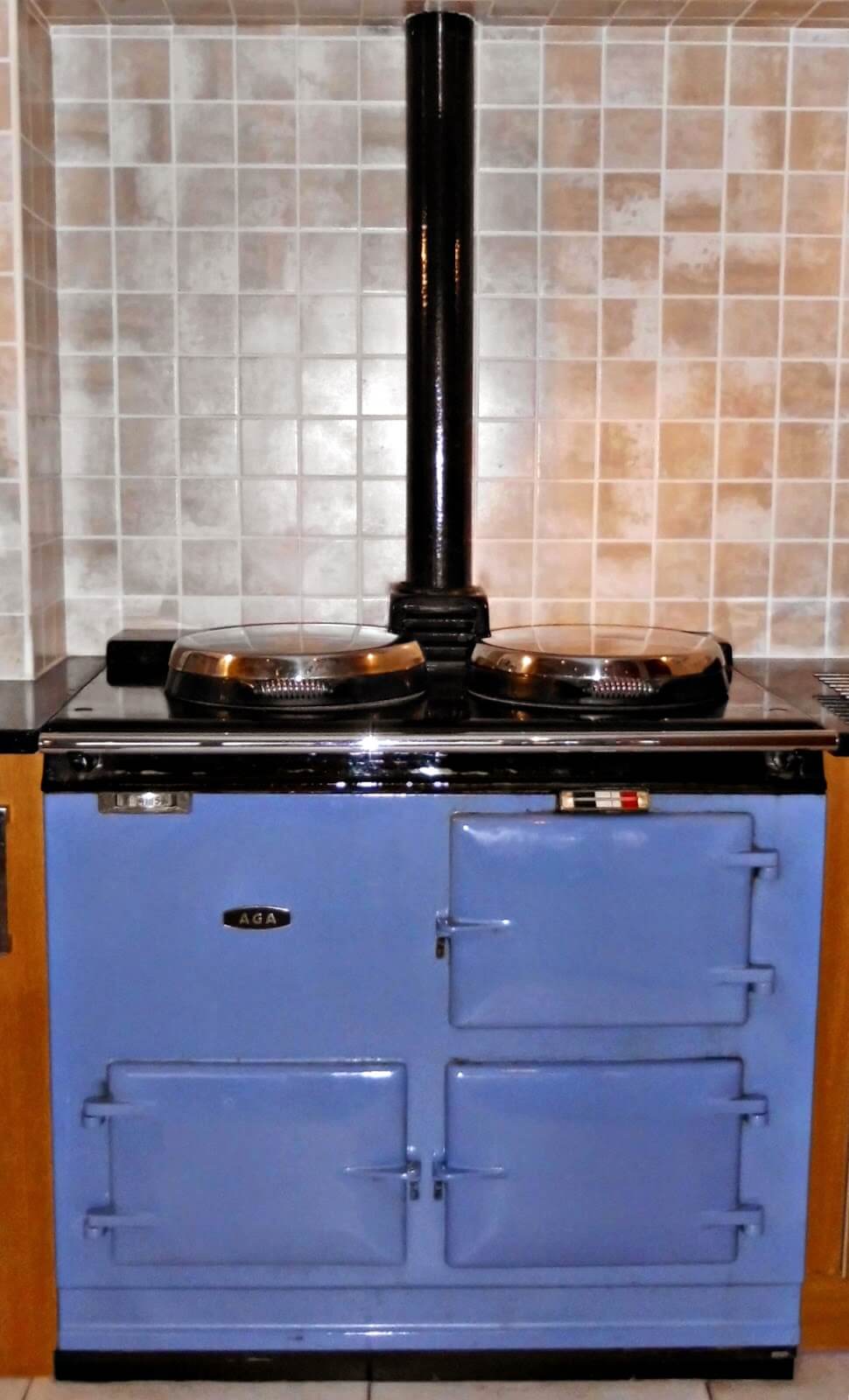
Agas were developed in the early 1920s by the blind Swedish Nobel prize-winning physicist, Gustav Dalen, who wanted to find a way to make it easier for his wife to cook. It works on the principles of heat storage. The frame of the Aga is enamelled cast iron which absorbs the heat from a constant low-burning heat source which can be fired by oil, gas or electricity. Ours is oil-fired and stays on all the time – some people like to turn theirs off during the summer months but we don’t have another way of cooking so ours stays on. If you look at the picture above, it looks as if we have three ovens, but the door on the left is the burner and the two doors on the right are the ovens.
This is what’s inside the burner door. The oil comes in through a small pipe to the burner in the centre which is constantly burning. The temperature is regulated by the thermostat dial that you can see in the bottom left hand corner. There are still solid-fuel Agas around which don’t have the thermostat dial and need to have the heat manually maintained, but having the thermostat does make life a lot easier! This burner is the part that needs servicing as the oil turns to coke in the pipe after a while and it gets blocked. I always know when my Aga needs servicing because it turns itself off – not always very helpful if I’m not expecting it! Luckily, we’ve got a great engineer who can usually get out to me quite quickly. I bought a pressure cooker a few years ago for just these occasions so we will have casseroles and soups for the day or two before the Aga is turned on again.

Once the Aga is cold, it’s easy to get in and give it a scrub. As you can imagine, no matter how careful you are at wiping up spills, there is still grease that gets baked onto the enamel, and the inside of the doors are usually in need of a clean as well. The doors come right off which makes it so much easier to get around the edges. Because it’s only grease, I use washing up liquid and a sponge scourer and they’re shiny again in no time.
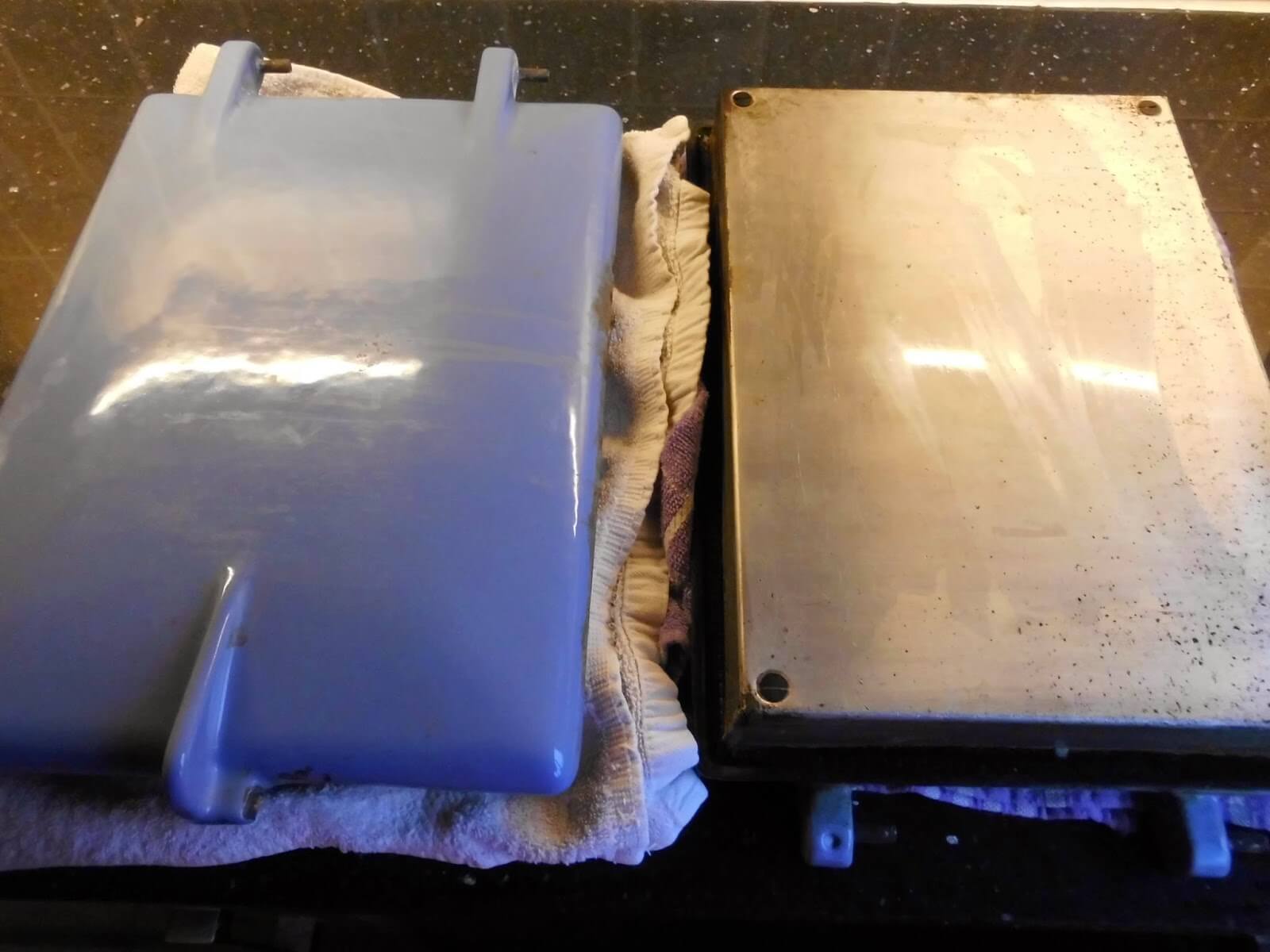
This is what I use on the rest of the enamel: Astonish paste and this nifty little scraper which removes the burnt-on grease without scratching. I wasn’t convinced about it at first, but once a lady at an Aga shop showed it to me and I realised it wasn’t going to damage my beloved Aga, I found that it did indeed make light work of the cleaning!

Cleaning the lids is my favourite part because they come up so beautifully shiny. They’re made of stainless steel so I just use a damp soapy cloth to clean them. For day-to-day use, I have towelling pads which sit on the lids to help keep the heat in and also to stop them getting scratched.
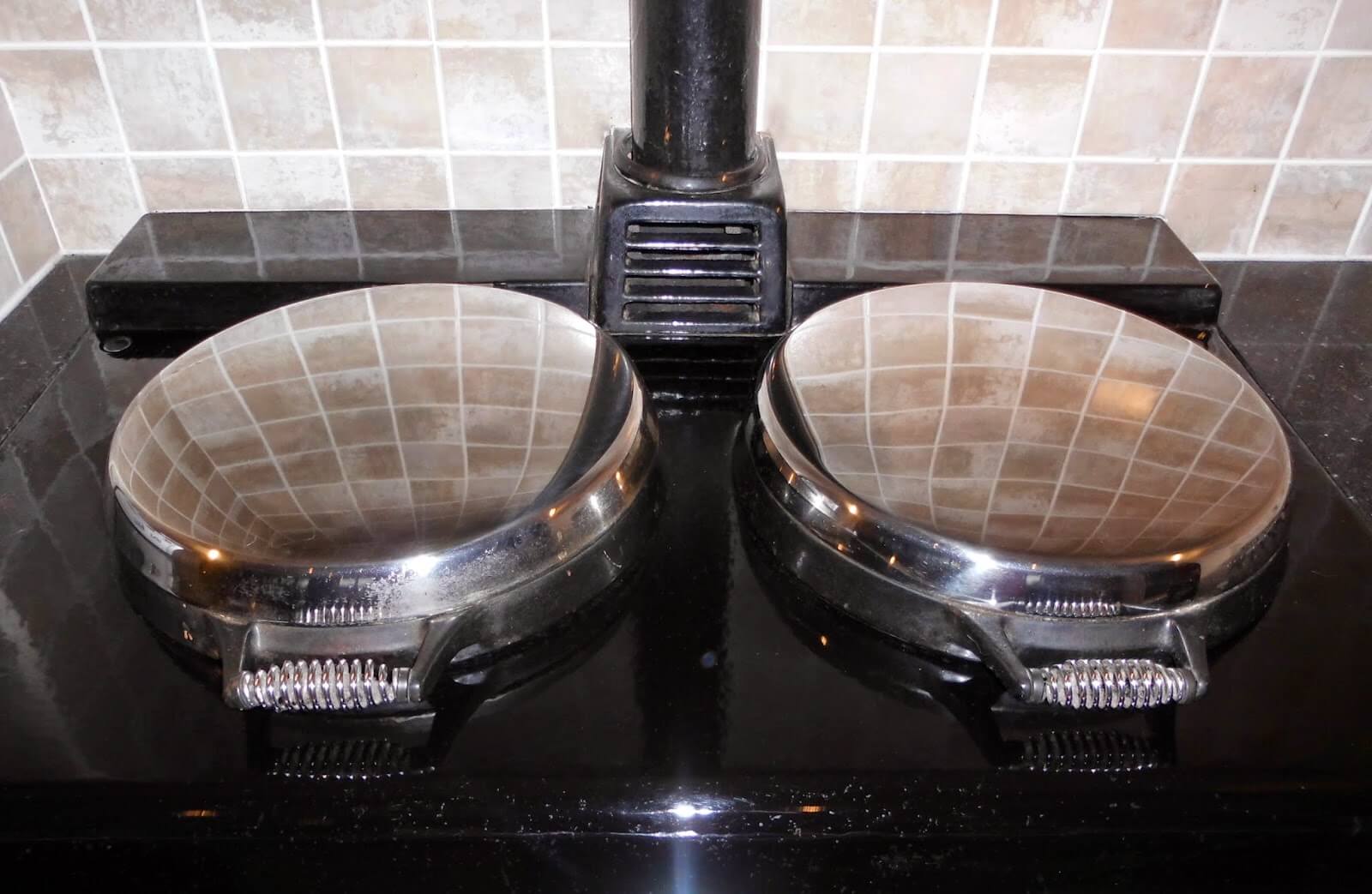
The left hand hotplate is called the boiling plate. It’s right above the burner so it’s the hottest part of the Aga. It brings pans and kettles to the boil very quickly and makes fabulous toast. The right hand hotplate is called the simmering plate. It’s cooler than the boiling plate and ideal heat for making Scotch pancakes. I have a piece of non-stick parchment called Bake-o-glide which is cut to the right shape for various Aga tins including the simmering plate. This means that I can cook straight onto the hotplate without worrying about the mess. It’s brilliant for frying eggs without any fat – we call them flat eggs because they’re not actually fried at all!

The two ovens are both the same size. The heat range goes from grilling heat at the top of the top (roasting) oven to cool enough to cook meringues at the bottom of the bottom (simmering) oven. To get the temperature that you need, you simply move the grid shelves up and down on the runners that you can see along the side of the oven. It’s a different way of cooking but is fine once you get used to it. I still get it wrong sometimes, even after all the years I’ve been using my Aga! The temperature of the ovens can vary as well, especially if you’ve had the hotplate lids open for a while as the Aga loses a lot of heat from the hotplates. If I’m cooking vegetables, I bring them to the boil on the boiling plate and then put the pan into the oven to conserve the heat. The oven goes about about 50cm so you can put a few pans in there – Aga even sell pans which have the handle set down into the lid so that you can stack them and save even more space.
The best thing about the ovens is that you never need to clean them. As they’re constantly hot, anything that gets spilt in there is quickly incinerated – the ultimate in self-cleaning ovens!

I mentioned that Agas can lose heat which will affect where you might position your grid shelves. This is the thermometer which tells you how the heat is doing. You can’t see so well in this picture, but it’s a mercury thermometer and the ideal is for the mercury to sit on that black line in the white section. Once you’ve been cooking with an Aga for a while, it’s quite easy to gauge how well your oven is performing and whether you need to adjust the cooking time. Once you’ve set the thermostat, the mercury will always return to the temperature that you’ve set – unless there’s a problem or the Aga needs a service.

And that’s about it! There really isn’t very much to an Aga; it’s a very simple principle and works very effectively. Once the engineer’s been, it takes about five hours for the Aga to get back up to temperature and for life to get back to normal again. The dog is very pleased to have his bed back in his cosy spot and the whole house feels warmer, even though the Aga doesn’t affect the heating.
Fancy a brew, anyone?
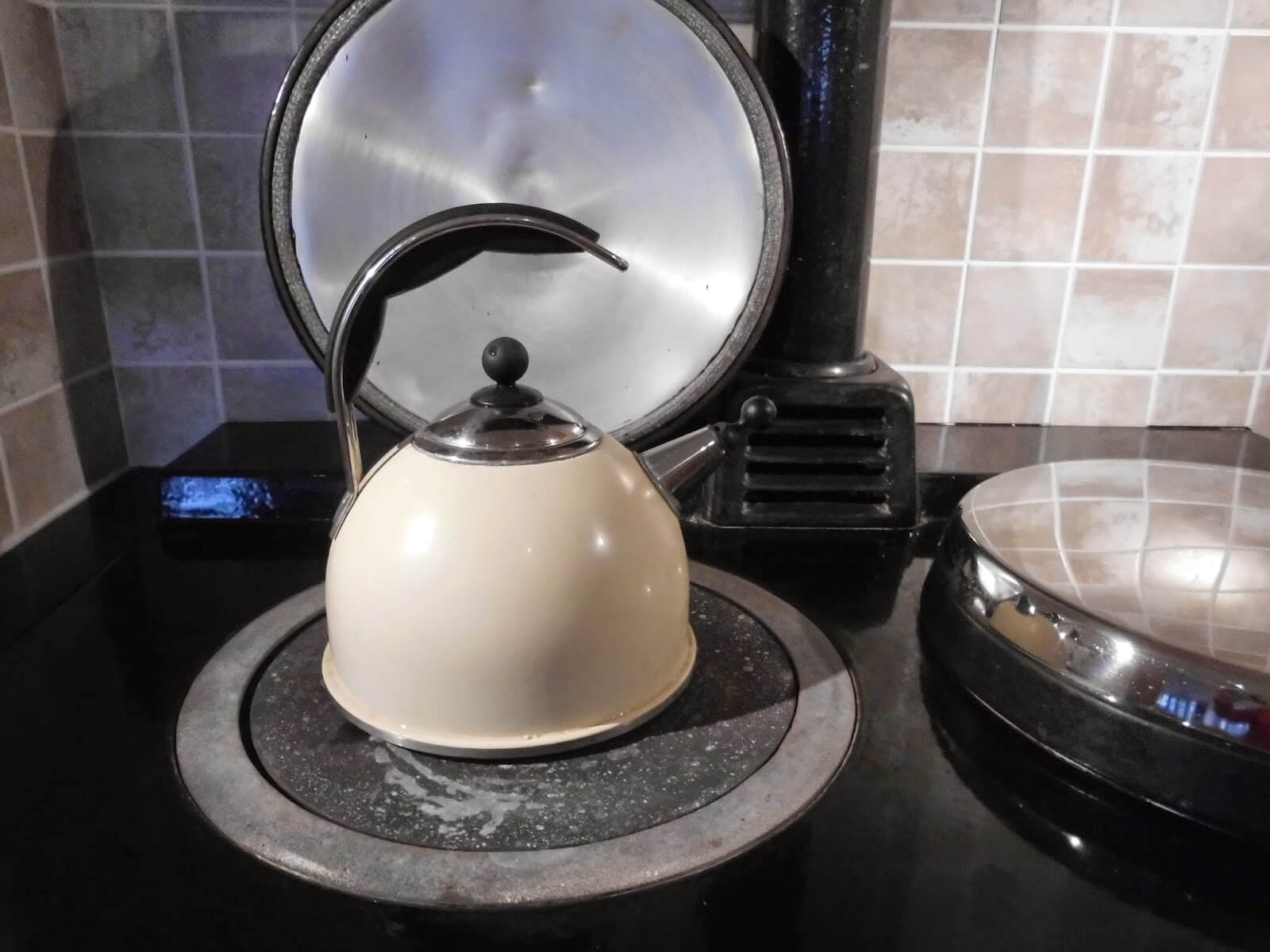
It’s Friday so of course I’m joining in with Planet Penny’s Happy Friday. Does my Aga make me happy? Just a little bit 🙂


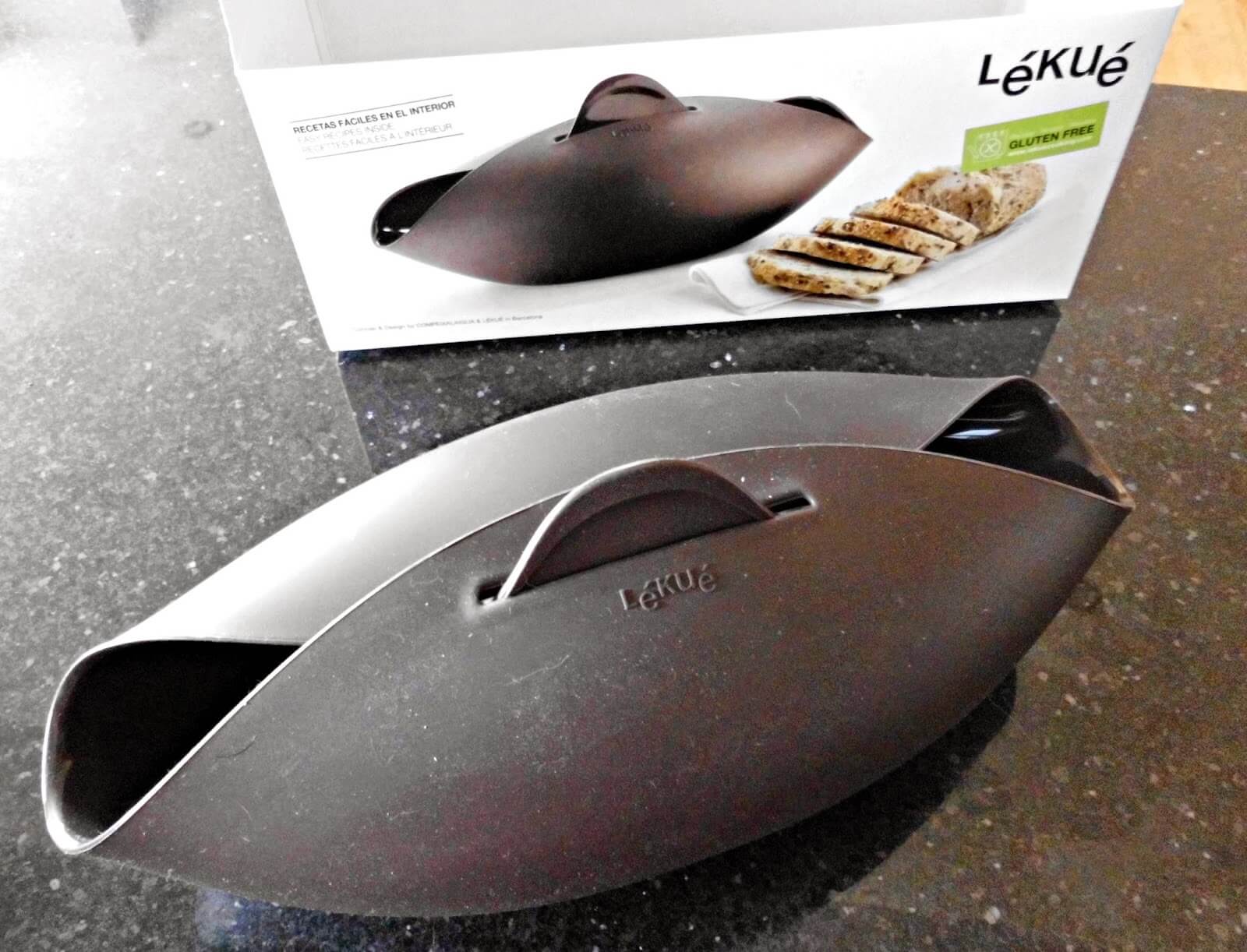








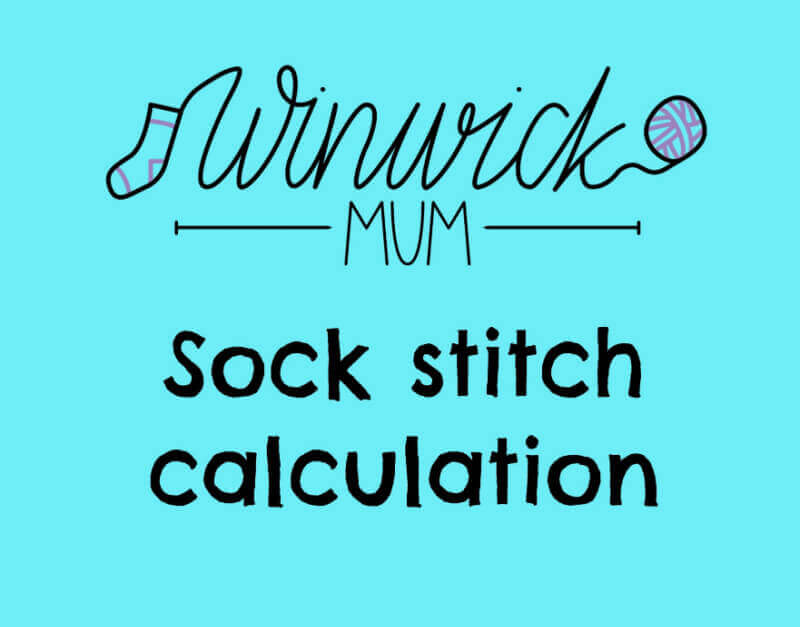














I grew up with and Aga, they are the best! I hope to have one again one day… 🙂 I love the colour of yours and it does look fantastically clean! x
It's very clean – for now! 🙂 xx
If I had a larger farmhouse style kitchen I would love to have an aga. When I used to stay at my Great Aunts and Uncles farmhouse they had a Reyburn which had Anthracite coke as it's heating source. It was always so cozy in their kitchen and I spent many happy hours there when I was a child. I love the colour of your aga and I am sure the food that is cooked in it is delicious. xx
There's definitely something about the constant warmth which is very comforting – we find that visitors always gravitate towards the Aga to stand in front of it (assuming the dog's not in the way!) xx
This is very enlightening. I've always been completely mystified by Agas but now I know how they work! They are wonderful to look at and it sounds practical… Once you get used to it!
There is an element of having to get used to it because it's a new concept to have to move whatever you're cooking up and down the ovens rather than adjust the temperature. I went to what I jokingly referred to as a "driving lesson" at an Aga shop which was a demonstration of how to cook – the best bit was that you got to eat the samples! xx
What an incredibly fascinating post!!! I have always been intrigued as to what was behind that other door and how an AGA worked, what was inside the doors and so on! Brilliant to read all about it and find out how you use it and how it all works. I wish that I could have one, but I think I would want another oven too as back up. No chance of getting one anytime soon, perhaps one day! I am glad that you have yours and that you love it so much!! xx
Thank you! I'm glad you enjoyed the post. I always thought that Agas were mysterious contraptions too (and there have been a few moments when I haven't changed my mind on that!) but really the concept is very simple. They're not the oven for everyone, but it's just right for me! xx
Oh your house sounds so blissful, an Aga and a dog sat in front of it. I have learnt so much reading your post.
Ali xx
Thank you. I'm very spoilt, and I never forget it! 🙂 xx
I am so envious of your Aga; I would love to have one some day. Yours is a gorgeous colour too. Have a happy weekend. x
Thank you! Hope you have a lovely weekend too – and that you get your Aga one day! xx
Oh I loved reading about your Aga. Not only do I like the looks of it but the history about how and why it was made is fascinating. But do you think I could learn to cook on one? I have a gas cooktop now. I'd cooked for 34 years without gas since I'd always had an all electric range. I hope you have a wonderful Valentine's day.
I think anybody could learn to cook on one, Pat, it's just whether you liked the style of cooking. It's probably not that different to your electric range to be honest. Previous to the Aga, I had a gas stove top and an electric oven and although I still have a few disasters, I managed to learn! xx
It looks so gorgeous! I am sure it gives a special and warm touch to your home 🙂
Happy weekend!
Lluisa xx
Thank you, Lluisa – yes it does! The house doesn't feel the same when it's not turned on, which is mad because it's just an oven, but there are people who ascribe whole personalities to their Agas – so perhaps not that mad at all! xx
How very lucky you are. I have always wanted one. I have lived in two properties that would have justified buying one and would have been great for the cold and windy area we lived in but just never got around to it. Now my kitchen is so small that I could only have the very tiny one, which is rather a high cost for such a small thing, in a very small kitchen, still I can dream and if I came into some money I would have one some how!
But you know how lucky you are and it is truly gorgous.
Thank you, and yes, I do know! And you never know, you may have one in your kitchen one day! xx
I love Agas, they make a real heart to the home. I love that Wedgwood Blue! Thanks for joining in with Happy Friday once again! x
Thank you – and I'm thoroughly enjoying Happy Friday! xx
Your kitchen must be really cosy in the winter! I love the colour too – a real focal point x
Yes – you can't miss my blue Aga! 🙂 xx
Ooohh serious Aga envy, haven't ever cooked on one, but would dearly love one….perhaps some day
Best Wishes
Sue xxx
I hope you get one! Thanks for visiting xx
Ooo your Aga is beautiful, I love the colour. My husbands aunt has an old Aga that is still fuelled by peat, (she lives out in the wilds of Ireland), she also has a regular oven. I love the shiny lids, it all looks so pretty 🙂
Jan x
An Aga fuelled by peat, imagine that! I think that the old solid-fuel Agas were probably quite high-maintenance, or at least involved more thought in advance about the time it would take to be at the right temperature for when you would need to use it. I'm very glad mine has a thermostat! xx
Just found your blog and loved this post. I'm in Canada and we're patiently waiting for the arrival of our AGA from the U.K. It's a newer version that doesn't stay on all day called the Legacy. Gas top and European convection ovens below. Can't wait to start using it!
Hello, it's lovely to see you! I've just been to have a look on the Aga site at what a Legacy looks like, and it's very smart! The good thing about dual fuel is that you won't have to wonder whether you need to turn it off when it gets hot in the summer! I hope you really enjoy using it! xx
I am coming over right now.
I get to cook on an Aga once a year on my seaside holidays; we dry the costumes and towels by the oven and eat really well with Welsh lamb, boeuf bourguinnone and roasted chicken. Mr AJ always asks me am I okay with the cooking (it being my holiday, officially) and I tell him that the cooking over the Aga is not a chore, but a pleasure. And I mean it. It's such a different experience from normally!
Your explanation is brilliant, and I love the colour. Seriously, that it one cute Aga!
That sounds like a lovely holiday, and meat cooks beautifully in an Aga because it doesn't dry out. Even on wet days it's something nice to come home to because you know it's going to be toasty warm and the kettle will be boiled in no time! xx
Well I have to say that I fully understand why you love your aga so much, the colour is gorgeous and they are so multifunctional – my grandparents had one and my brother and I were fascinated by it as young children! Enjoy!
Caz xx
Thank you! I can remember things from my grandparents' houses that fascinated me as a child – sometimes it amazes me what's stored in my head! xx
What a beautiful colour for your Aga – ours is British racing green and I adore it. I love the scraper – will definitely order one of those. We've had our stove for almost 15 years and it's starting to look 'well loved' – oh for shiny lids again but it's too late now. The good intentions and pads didn't last long.
Ooh, you have picked a nice colour too, I like the British racing green. The scraper is a great tool, I'm really pleased with it, and you can use it while the Aga's hot too if you need to. Ha ha, my family know it's more than their lives are worth to put anything except the pads on the lids! xx
I love the color of your cooker!!! We live across the pond in the states, in rural Massachusetts… and have a white, two oven gas AGA…. we love our AGA and also keep ours on year round… we live in a very old drafty home and our AGA( We call ours Jeeves), keeps our home nice and toasty!!!
Jeeves is a fabulous name for an Aga! Ours doesn't actually have a name, it's just "the Aga" but it doesn't seem to be too offended 🙂 xx